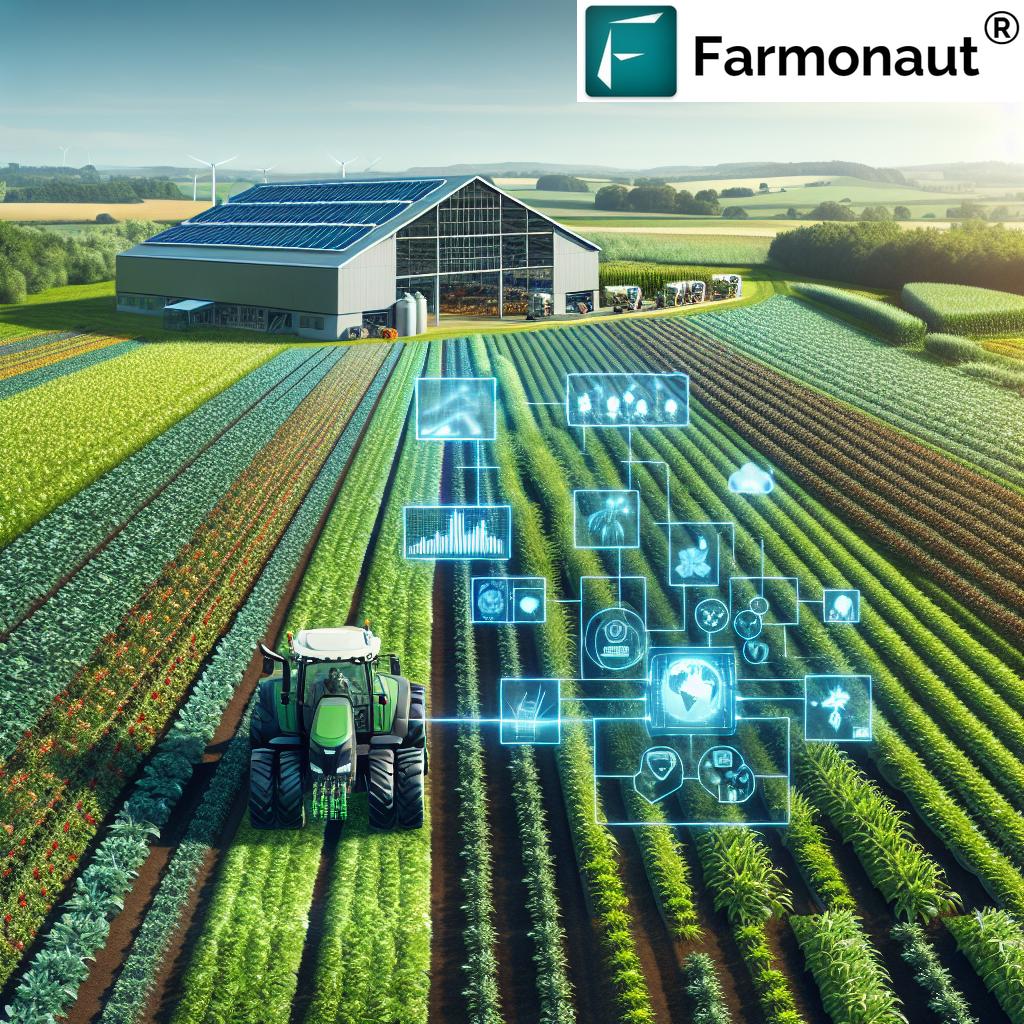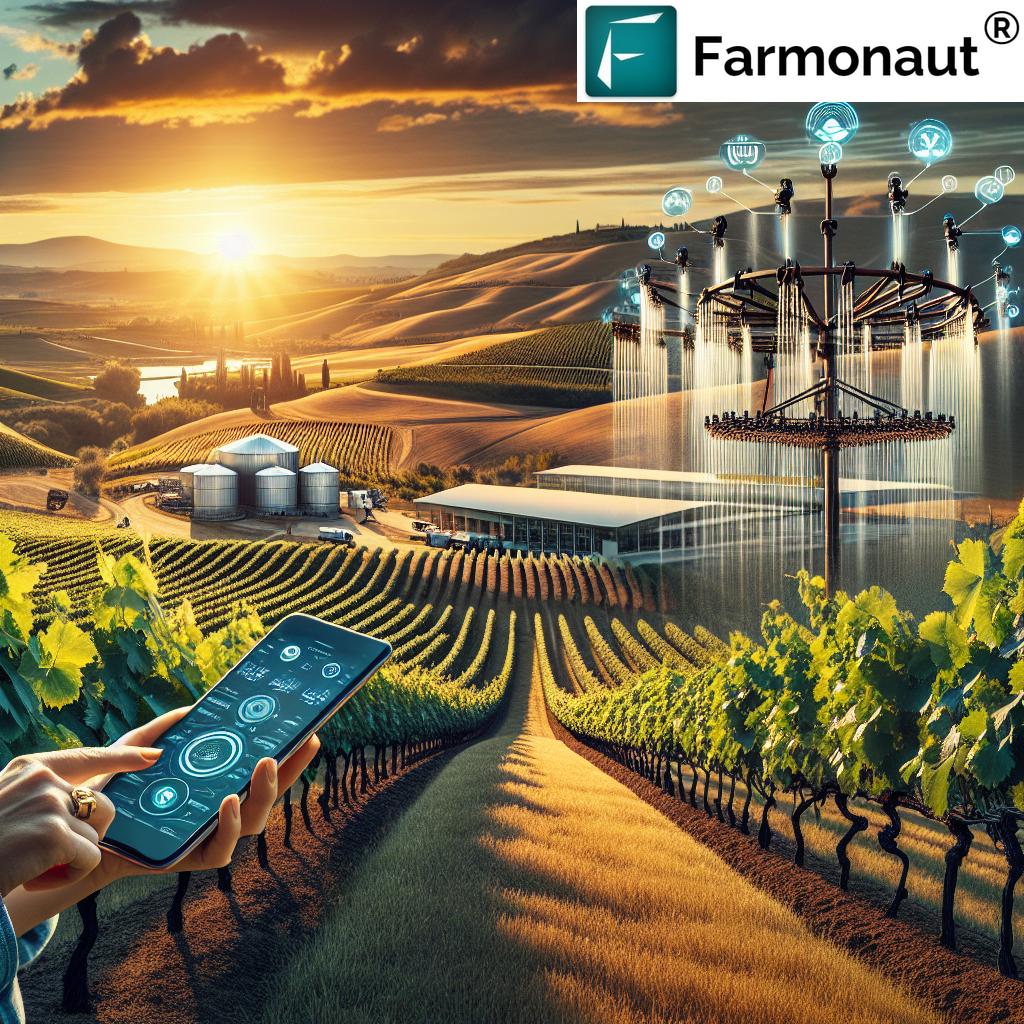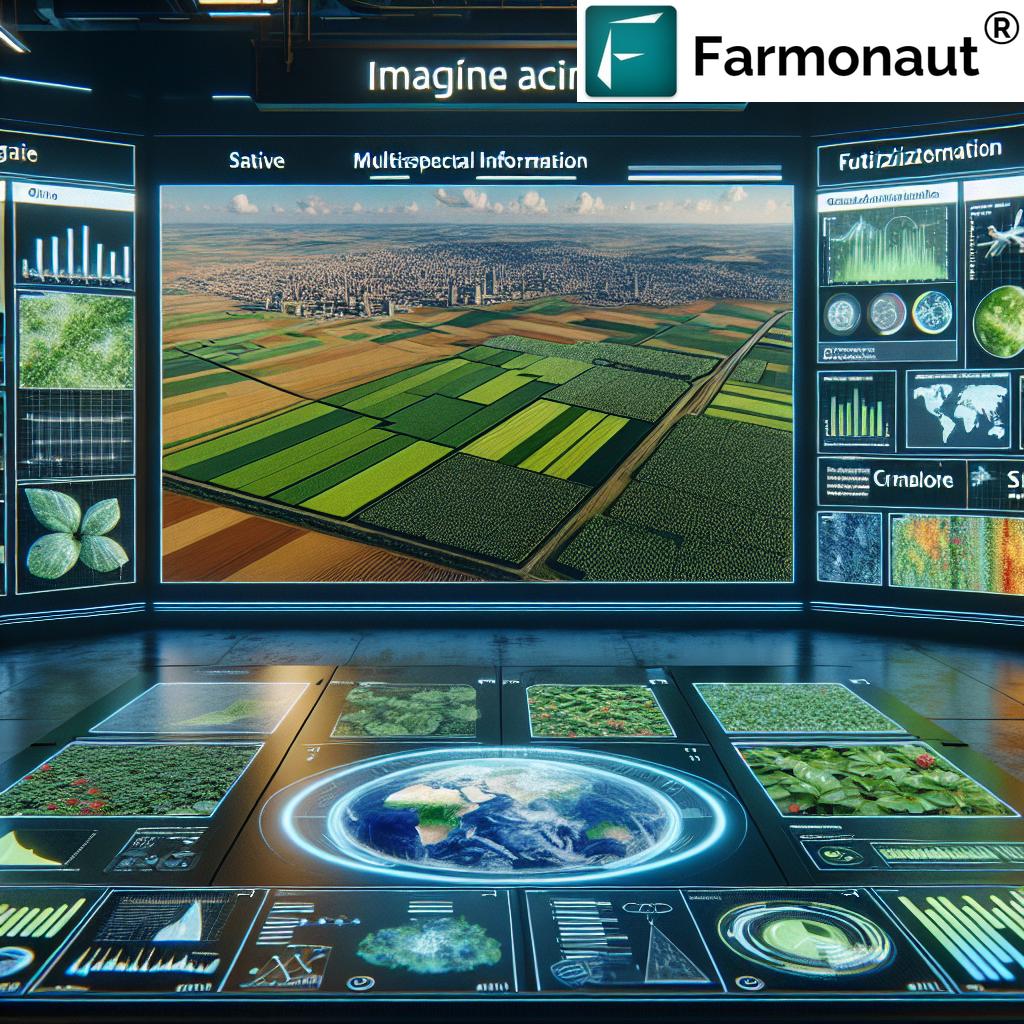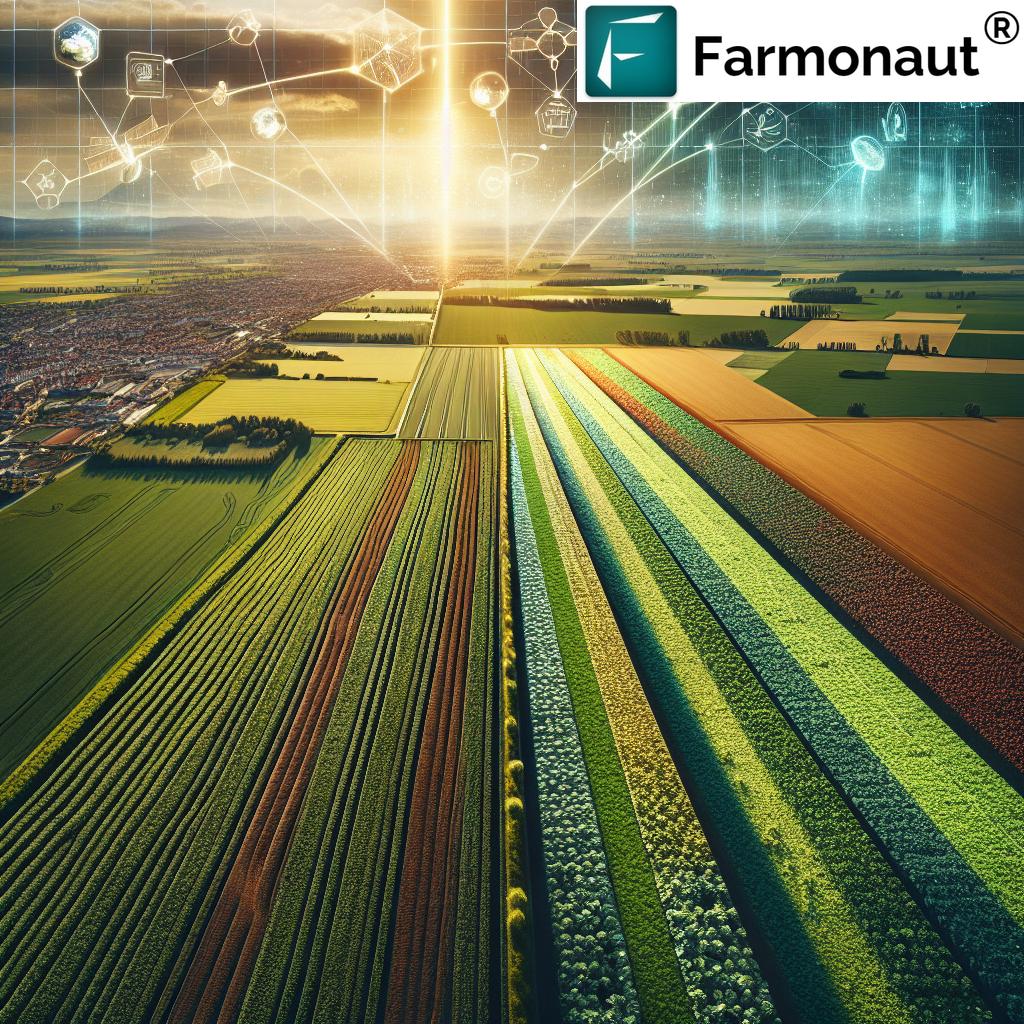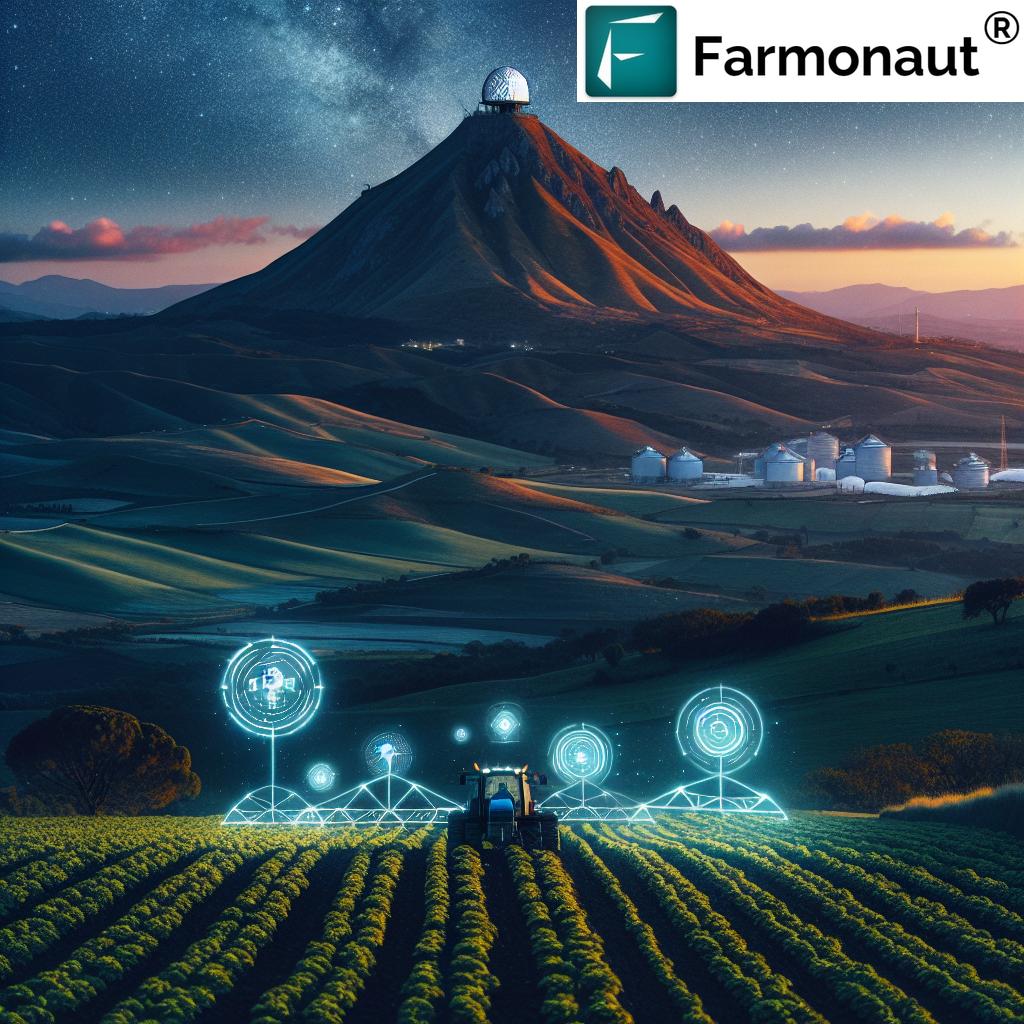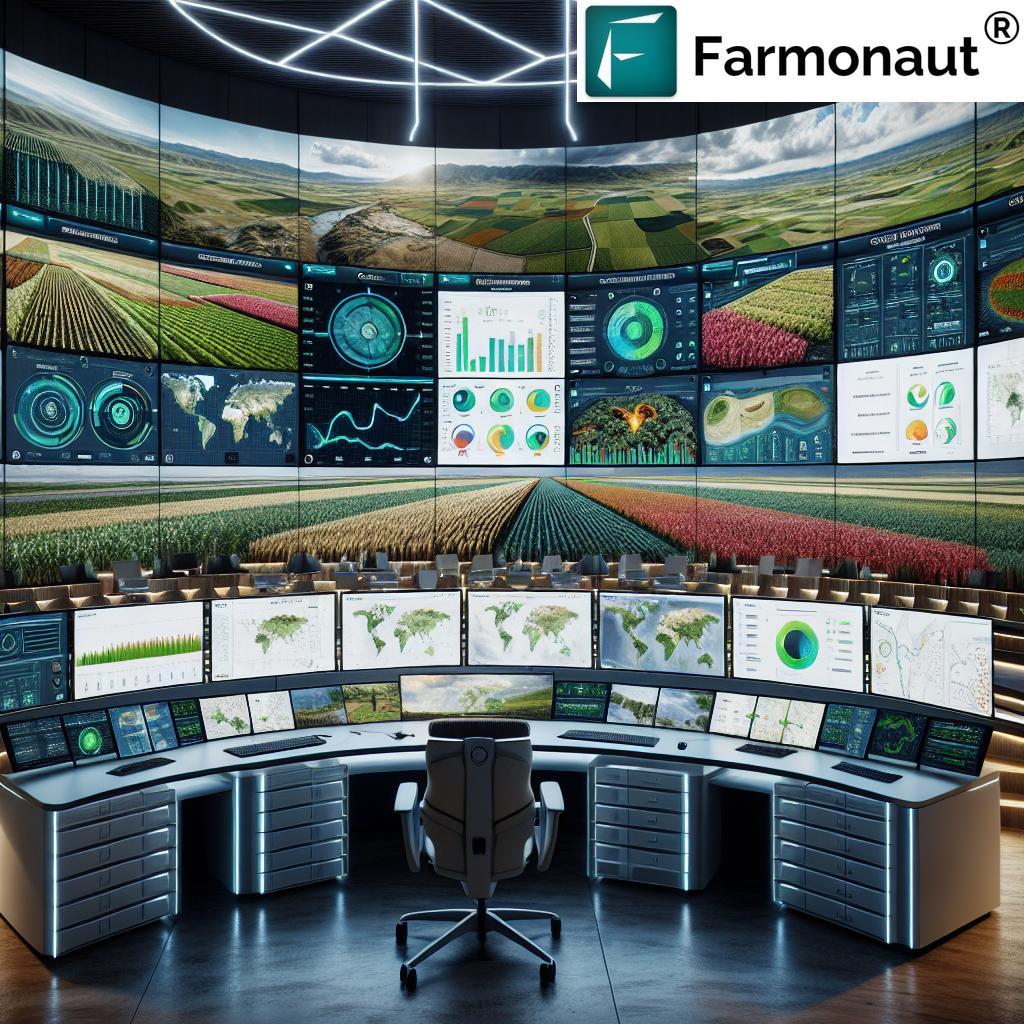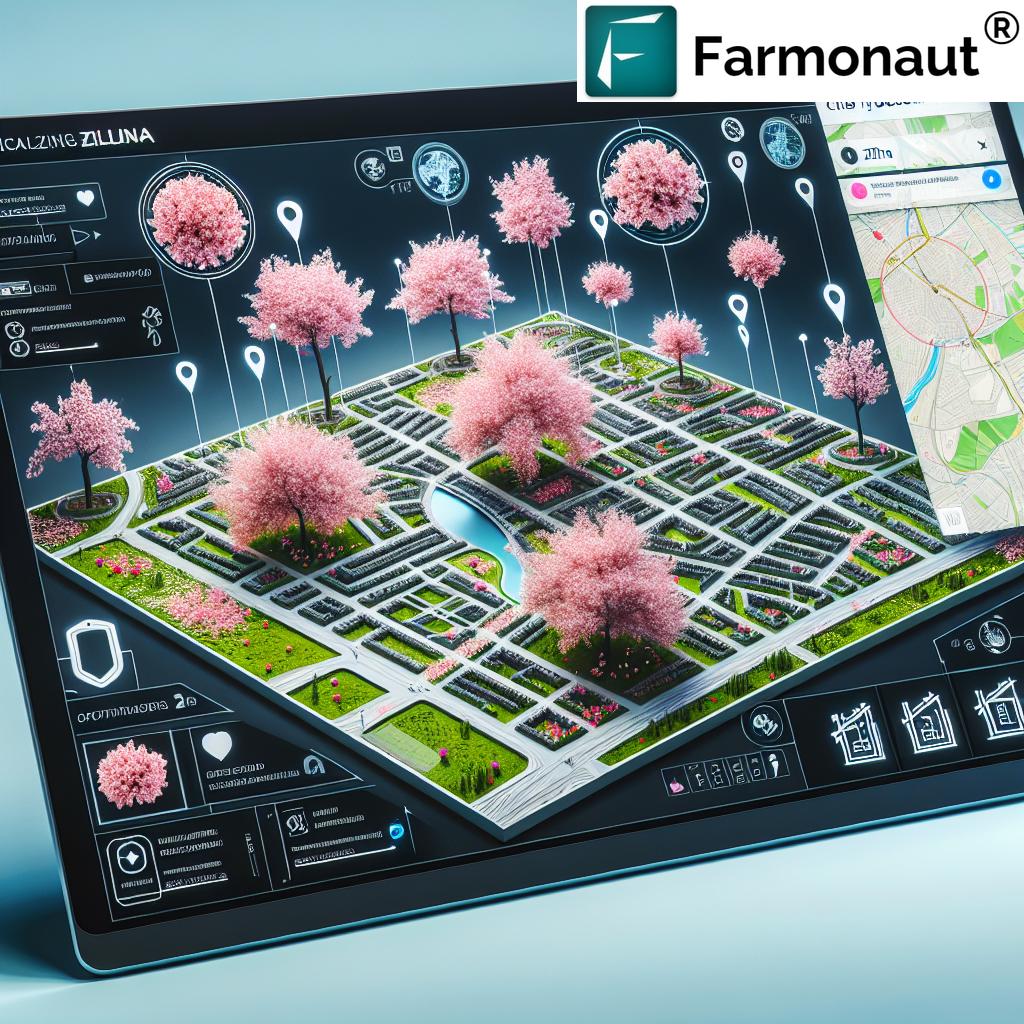Precision Harvesting Market Europe: 2025 Forecast
Table of Contents
- Introduction: Revolutionizing Agriculture in Europe with Precision Harvesting
- Precision Harvesting Market: 2025 Overview & Key Forecasts
- Growth Drivers: What’s Fueling the European Precision Harvesting Sector?
- Challenges & Opportunities in the Precision Harvesting Market
- Technology & Innovation: Smart Harvesting Tech, AI, Robotics, IoT
- Key European Regional Trends & Country Comparisons
- Farmonaut: Making Precision Agriculture Accessible & Affordable
- Advanced Farm Management Systems & Digital Solutions
- Comparative Forecast Table: Leading European Countries
- FAQs: Precision Harvesting Market Europe 2025
- Conclusion: The Future of Precision Harvesting in Europe
Introduction: Revolutionizing Agriculture in Europe with Precision Harvesting
The precision harvesting market is set to transform European agriculture by 2025 and beyond. As advancements in smart harvesting technology, robotics, and artificial intelligence (AI) accelerate, farms across Germany, the Netherlands, France, Spain, and Italy are embracing innovation for yield optimization and sustainable production. In a landscape shaped by rising labor costs, agricultural labor shortages, and the imperative for resource-efficient methods, precision agriculture equipment and data-driven systems are rapidly gaining ground.
In this comprehensive forecast, we explore the latest statistics, market growth drivers, digital trends, and technological innovations—including satellite-powered platforms like Farmonaut—reshaping the European agricultural industry. We also analyze regional leadership, adoption strategies, and how AI and robotics-driven automation are boosting food productivity for farms both large and small.
Precision Harvesting Market: 2025 Overview & Key Forecasts
According to a June 2025 report by MarketsandMarkets (Delray Beach, Fla.), the global precision harvesting market is poised to reach USD 29.79 billion by 2030, up from USD 21.52 billion in 2025, reflecting a robust CAGR of 6.7%. Within Europe, the anticipated value for 2025 stands at approximately USD 1.2 billion, securing the region’s position as a significant contributor globally. Notably, this sector encompasses technologies and systems designed to boost yield optimization, lower agricultural waste, and streamline farm operations amid rising costs and labor shortages.
- Market Revenue (2025): USD 21.52 billion globally
- Forecasted Revenue (2030): USD 29.79 billion globally
- Growth Rate (CAGR): 6.7% (2025–2030)
- Key Regions: Europe, North America, Asia Pacific, Rest of World
- Leading Segments: Robotics, AI-integrated harvesters, sensor-based management systems
Smart farming initiatives, government subsidies, and integration with advanced digital tools are the chief factors attracting European farmers, agribusinesses, and agricultural organizations to invest in precision harvesting solutions.
These accessible interfaces, powered by satellite-based farm management and AI-driven insights, empower European farms to monitor fields, optimize yields, and make decisions rooted in real-time data.
Growth Drivers: What’s Fueling the European Precision Harvesting Sector?
Several pivotal growth drivers are propelling adoption of precision harvesting technologies across Europe. Let’s examine the most important factors behind this rapidly evolving market:
1. Rising Labor Costs and Agricultural Labor Shortages
- European farms face escalating labor shortages due to an aging rural workforce and increased urban migration. This significantly raises operational costs and challenges conventional farming models.
- Robotics, AI, and autonomous harvesting equipment are viewed as essential agriculture labor shortages solutions, offering continuous operation with precision and lower error rates compared to human labor.
2. High Return on Investment & Yield Optimization in Farming
- Precision harvesting market solutions enable yield optimization by ensuring crops are harvested at peak ripeness, minimizing post-harvest waste and maximizing financial returns for farmers.
- Technologies such as sensor-based yield mapping, satellite imagery, and machine guidance systems allow farms to manage resources more effectively, even at large scales.
3. Government Subsidies and Smart Farming Initiatives
- The European Union and national governments offer subsidies, incentives, and grants to spur the adoption of digital, smart harvesting technologies for sustainable food production.
- These initiatives help offset the initial costs of advanced equipment while encouraging sustainable resource management and environmental stewardship.
4. Growing Food Demand & Global Population Trends
- With increasing global population, Europe is confronted by a surging demand for food. Modern precision agriculture equipment improves productivity so farms can supply both domestic and export markets more efficiently.
5. Integration of AI, IoT, and Imaging in Equipment
- AI-powered harvesters, machines equipped with IoT sensors, and field-level imaging are now standard expectations for competitive operations seeking automation and optimization.
- The rise of advanced farm management systems makes it easier for farmers to integrate multiple technologies for comprehensive data-driven decision making.
Challenges & Opportunities in the Precision Harvesting Market
Key Market Challenges
- Lack of Skilled Operators: Farmers and workers require new technical skills for digital and robotic systems. Training programs are crucial as technology becomes more complex.
- Upfront Investment Costs: Despite support through government subsidies, some European farms are cautious about the high initial cost of advanced precision harvesting equipment.
- Integration Barriers: Interoperability between sensors, software, and automation platforms varies, sometimes posing a hurdle for smaller enterprises.
Key Opportunities
- High-Value Crop Segments: Advanced solutions for fruits, vegetables, and specialty crops present new avenues for growth, as robots in agriculture are highly efficient in delicate crop handling.
- Smart Harvesting Technology: The emergence of cloud-based analytics, real-time monitoring apps, and satellite-powered platforms (such as Farmonaut) democratize access across farm sizes.
-
Carbon Footprinting & Sustainability: Growing environmental awareness leads to demand for management systems that track emissions, optimize input usage, and promote long-term sustainability.
(Learn about Farmonaut’s carbon footprinting tools & benefits)
Technology & Innovation: Smart Harvesting Tech, AI, Robotics, IoT
The core of the precision harvesting market forecast in Europe is technological adoption. Digital transformation, automation, and real-time monitoring systems encompass a new era for modern farming and yield improvement.
Harvesting Robots in Agriculture: Transforming Labor & Output
- Robotic harvesters are expected to register the highest CAGR by 2030, reflecting a dramatic shift toward smart automation in the sector.
- The surge is most visible in fruits and vegetables—where robots such as those by Agrobot (Spain) and Octinion (Belgium) are adept at delicate picking and sorting, minimizing waste and errors.
- Benefits: These machines work continuously, reduce human error, lower labor dependency, and integrate with yield monitoring for data-rich management.
Sensor-Based Yield Mapping & AI-Driven Platforms
- The rise of sensor-driven yield mapping and guidance systems allows for pinpoint crop analysis and optimization—vital for meeting stringent European Union standards.
- AI platforms, like Farmonaut’s Jeevn AI Advisory (explore crop & plantation advisory here), analyze myriad satellite and on-field data points for actionable recommendations—automatically sent to farmers via app.
Role of IoT and Integration for Advanced Farm Management Systems
- IoT-enabled sensors (temperature, soil moisture, crop health) linked with cloud analytics help farms automate everything from planting to harvesting.
- Leading companies like CLAAS (Germany), CNH Industrial N.V. (Netherlands), and SDF Group (Italy) focus on seamless system integration, yielding smarter, more responsive field operations.
- Farmonaut’s fleet management supports optimal machinery use (fleet tracking & operational efficiency).
For digital transformation at scale, platforms with public API access and robust developer documentation—such as Farmonaut’s API for real-time satellite and weather data and embedded developer docs—allow third parties and innovators to build customized, scalable agriculture solutions.
Key European Regional Trends & Country Comparisons
Europe is forecast to remain the second-largest contributor to the global precision harvesting market by 2030. Within the region, there are marked differences in progress, driven by government policies, technological infrastructure, and the presence of established agricultural manufacturing powerhouses.
- Germany—a technology leader through companies like CLAAS and startups driving field robotics and sensor integration.
- Netherlands—pioneers in greenhouse automation and vertical farming, strong in digital adoption.
- France—early adopter of robotics, strong government support for sustainable methods, coupled with precision tools for high-value crops like grapes.
- Spain & Italy—focus on addressing labor shortages in fruit and specialty crop sectors via advanced harvester tech.
The integration of solutions such as Farmonaut—making affordable, satellite-based farm management possible across rural areas—enables even small-to-medium farms to leapfrog from manual to fully digital management.
Farmonaut: Making Precision Agriculture Accessible & Affordable
As a pioneering force in advanced digital farm management, Farmonaut offers platforms powered by satellite imagery, AI, and robust advisory services—bridging the gap for farmers who lack expensive, hardware-based setup.
- Satellite-Based Crop Health Monitoring: Farmonaut uses multispectral imagery to deliver actionable insights on crop health, soil moisture, and pest or disease risk. Farmers gain precise, real-time alerts for yield optimization with reduced waste.
- Jeevn AI Advisory System: This AI-driven tool provides hyper-personalized advice, integrating weather analysis, crop stage, and resource use for higher productivity and optimization.
- Blockchain-Based Traceability: With traceability tools, farmers and companies can verify origins and logistics, ensuring transparent supply chains—from field to consumer.
- Fleet and Resource Management: By digitizing fleet tracking and machinery scheduling, Farmonaut’s fleet management lowers operational costs and optimizes machinery use.
- Carbon Footprinting for Sustainability: Carbon tracking tools quantify emissions trends to help European farms comply with environmental regulations and prepare for evolving green standards.
Unlike traditional precision tools reliant on hardware, Farmonaut democratizes access—enabling even the most remote or mid-scale European farms to take part in smart, digital transformation.
Advanced Farm Management Systems & Digital Solutions
-
API Access: Farmonaut’s platform allows direct API integration for developers and other agritech providers, supporting rapid innovation and bespoke agri apps.
(
Explore API developer documentation here) - Scalability: Farmonaut supports large-scale farm management systems for cooperatives, governments, and agribusinesses.
- Financial Access: Through satellite-based verification, Farmonaut assists loan and insurance processes, making it easier for European farmers to access credit and reduce fraud.
Modular subscriptions, real-time monitoring, and the flexibility to serve both individual farmers and large organizations help accelerate Europe’s digital agricultural revolution.
Comparative Forecast Table: Leading Precision Harvesting Technologies by Country (2025)
| Country | Estimated 2025 Market Size (USD Million) |
Technology Adoption Rate (%) | Leading Precision Technology | Projected Annual Growth Rate (%) |
|---|---|---|---|---|
| Germany | 340 | 45 | AI-powered harvesters, sensor-based yield mapping | 7.1 |
| Netherlands | 210 | 52 | Robotic systems, greenhouse automation | 7.8 |
| France | 260 | 48 | AI, robots in viticulture, sensor-guided equipment | 6.5 |
| Spain | 185 | 41 | Automation for fruits/vegetables, GPS-based harvesters | 6.9 |
| Italy | 160 | 39 | Sensing systems, robotic arms in orchards | 7.3 |
FAQs: Precision Harvesting Market Europe 2025
- What is precision harvesting?
Precision harvesting is the use of advanced technologies—such as AI-powered machines, robotics, sensor platforms, and satellite imagery—to maximize crop harvest efficiency and yield, minimize waste, and optimize resource inputs. - Which technologies lead the European market?
In 2025, AI-powered harvesters, robotic systems, and sensor-based yield monitoring are the most widely-adopted solutions. IoT-connected equipment and digital farm management platforms are also rapidly scaling. - Why is Europe investing in advanced harvesters and management systems?
Key drivers include labor shortages, rising labor costs, government sustainability incentives, the need to meet strict environmental regulations, and a focus on food security and export competitiveness. - How is Farmonaut involved in European precision agriculture?
Farmonaut provides scalable satellite-based data, AI-driven farm advisory, blockchain traceability, resource management, and environmental tracking. This makes precision agriculture affordable and accessible for farmers and organizations of any size. - What challenges remain for market growth?
Challenges center on upfront technology costs, need for specialist training, and ensuring interoperability between digital systems. However, evolving regulations, subsidies, and farmer-friendly platforms are quickly alleviating these barriers. - Can Farmonaut solutions be accessed via mobile and API?
Yes! Farmonaut offers Android and iOS apps as well as an open API, enabling data-driven management from any device, anywhere, and integration with enterprise software.
Conclusion: The Future of Precision Harvesting in Europe
The European precision harvesting market is at the frontline of the technological revolution in agriculture. As we look ahead to 2025 and beyond, AI, robotics, IoT, and advanced digital management tools will define competitiveness, sustainability, and food security across the region’s farms.
Providers such as Farmonaut are crucial to this future, democratizing smart agriculture and making yield optimization and digital management possible for all. With a mosaic of supportive government initiatives, robust equipment manufacturers, and rapid growth in high-value crop segments, Europe is well-placed to lead in automation, sustainability, and food production efficiency.
Explore the next chapter of the digital agriculture journey—download the full Market Report, try Farmonaut’s App or start with a free trial, and join the movement transforming European farming.









